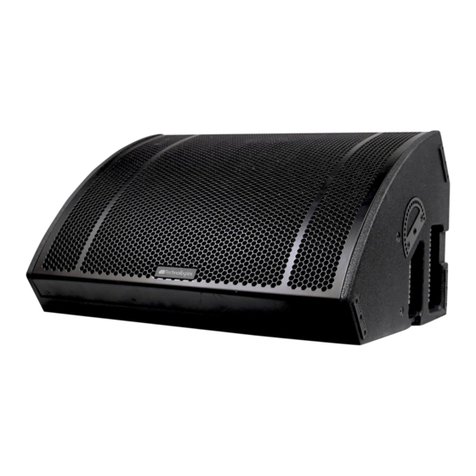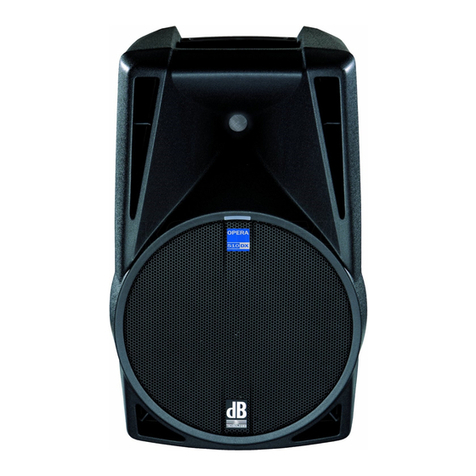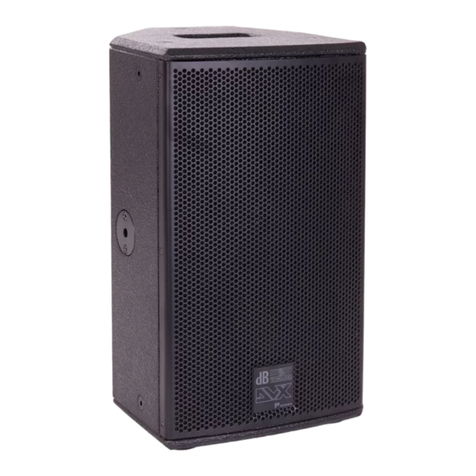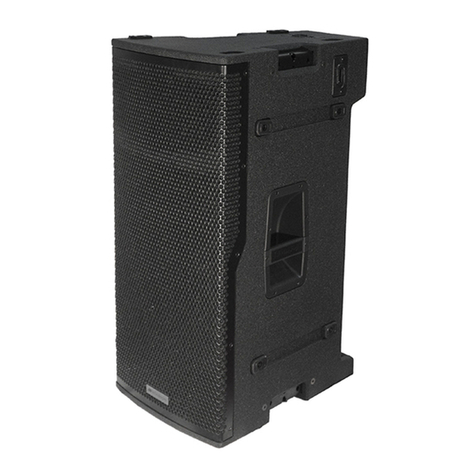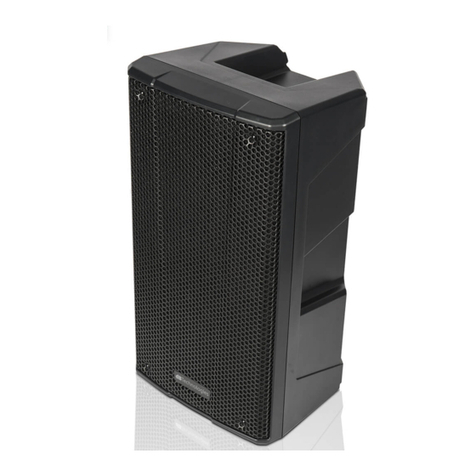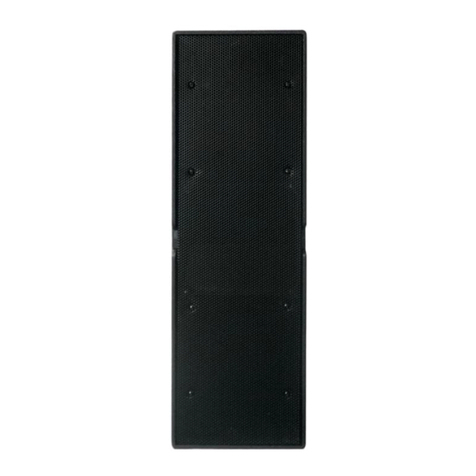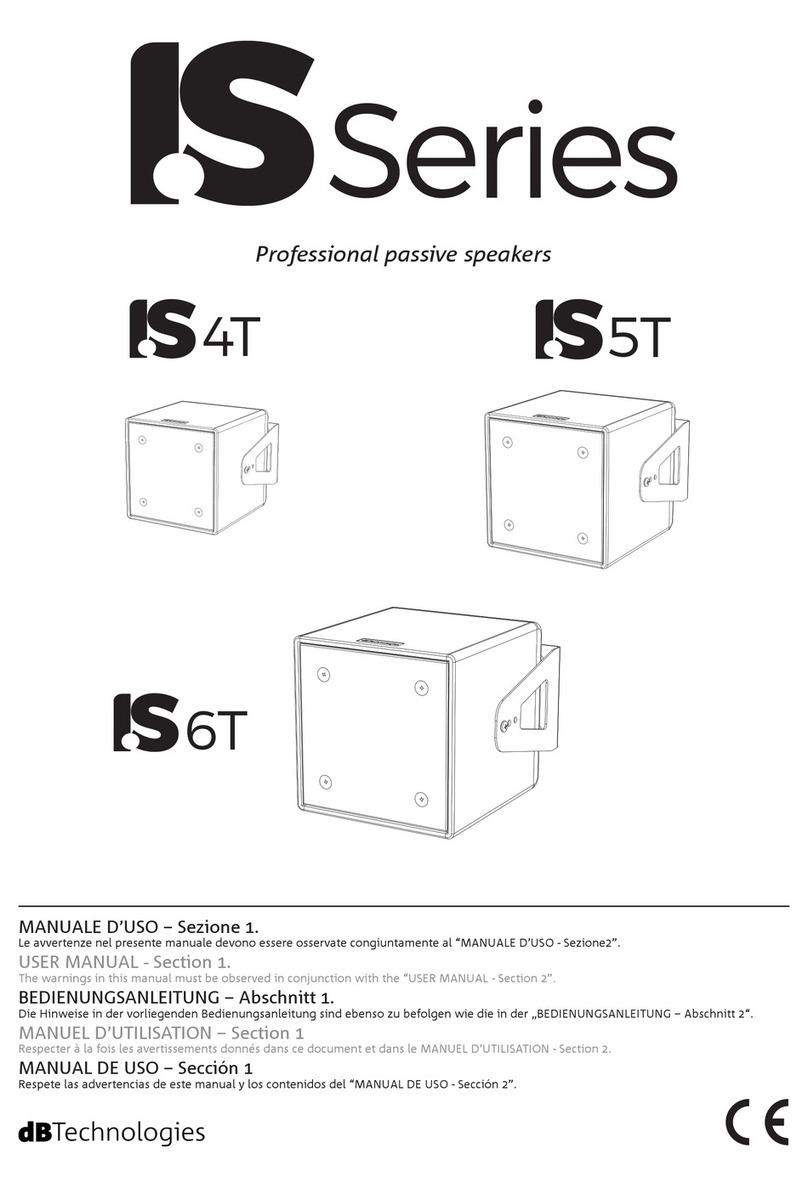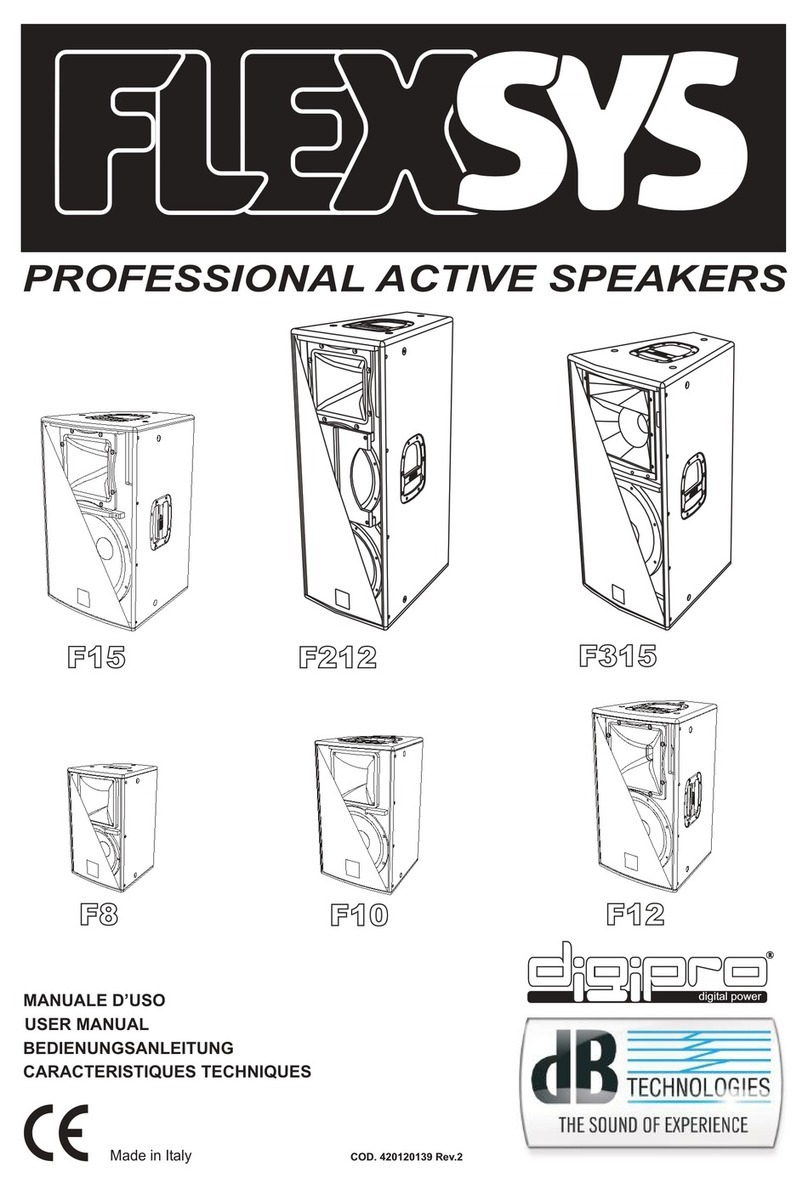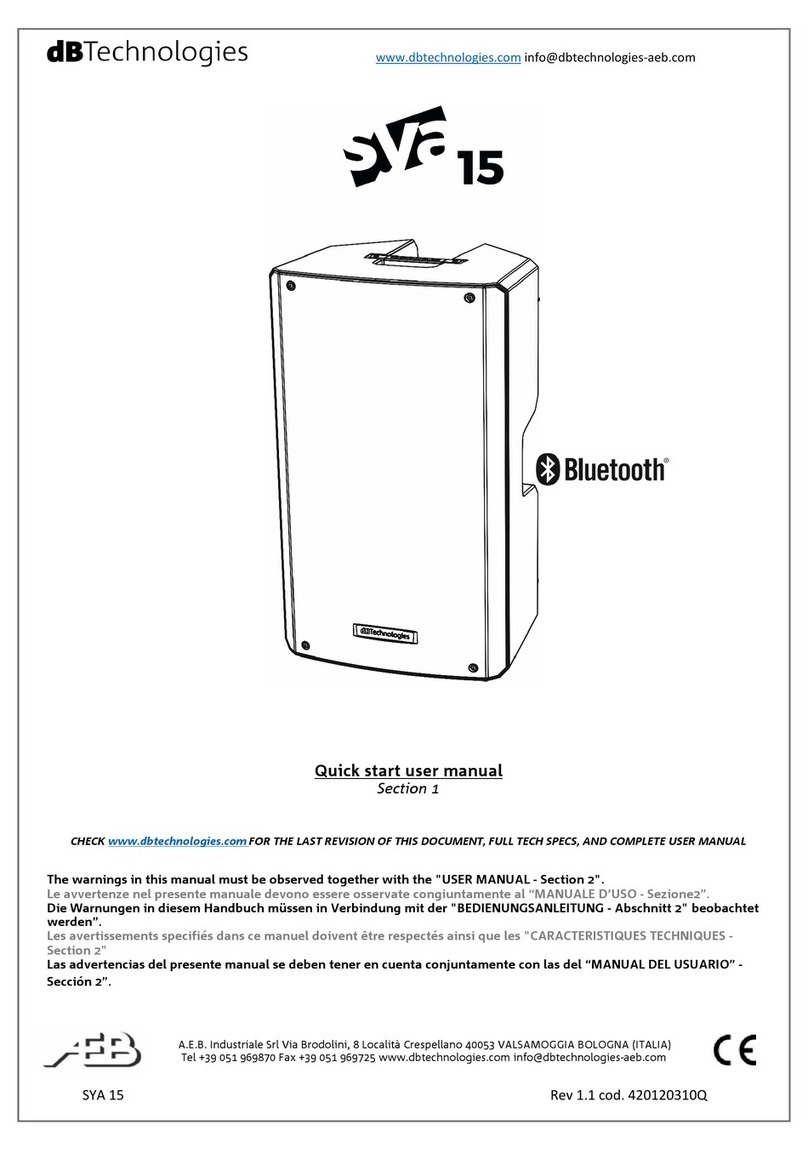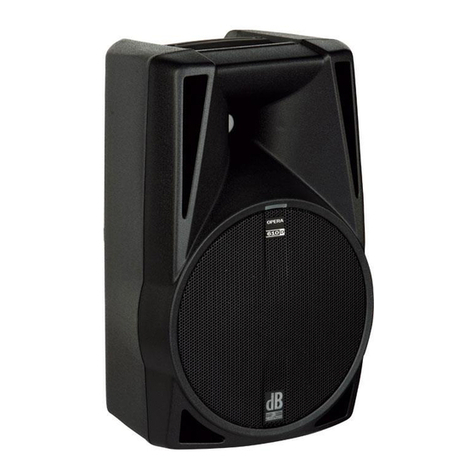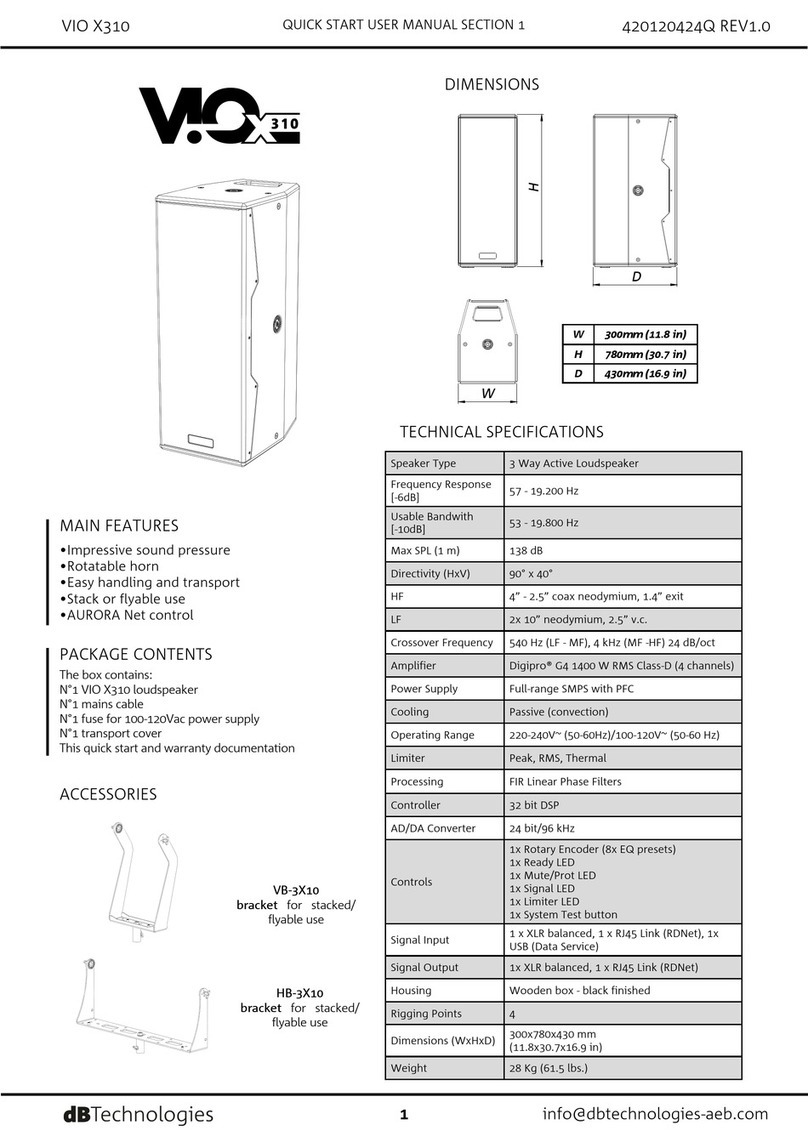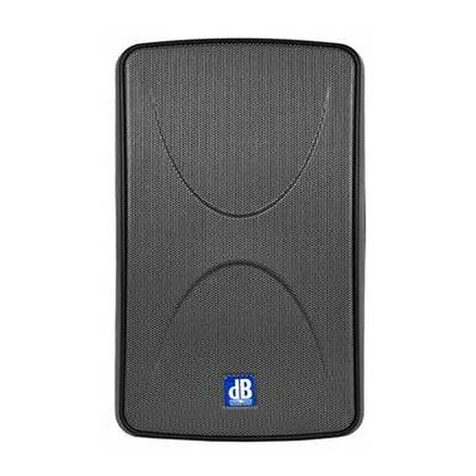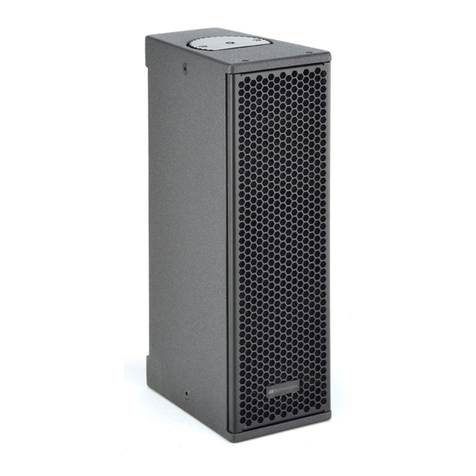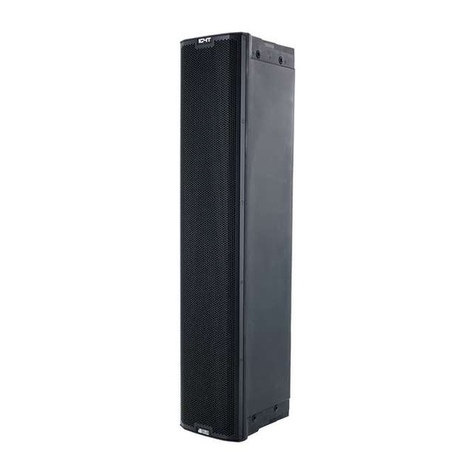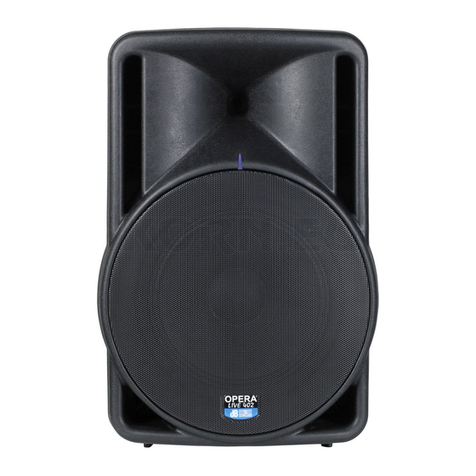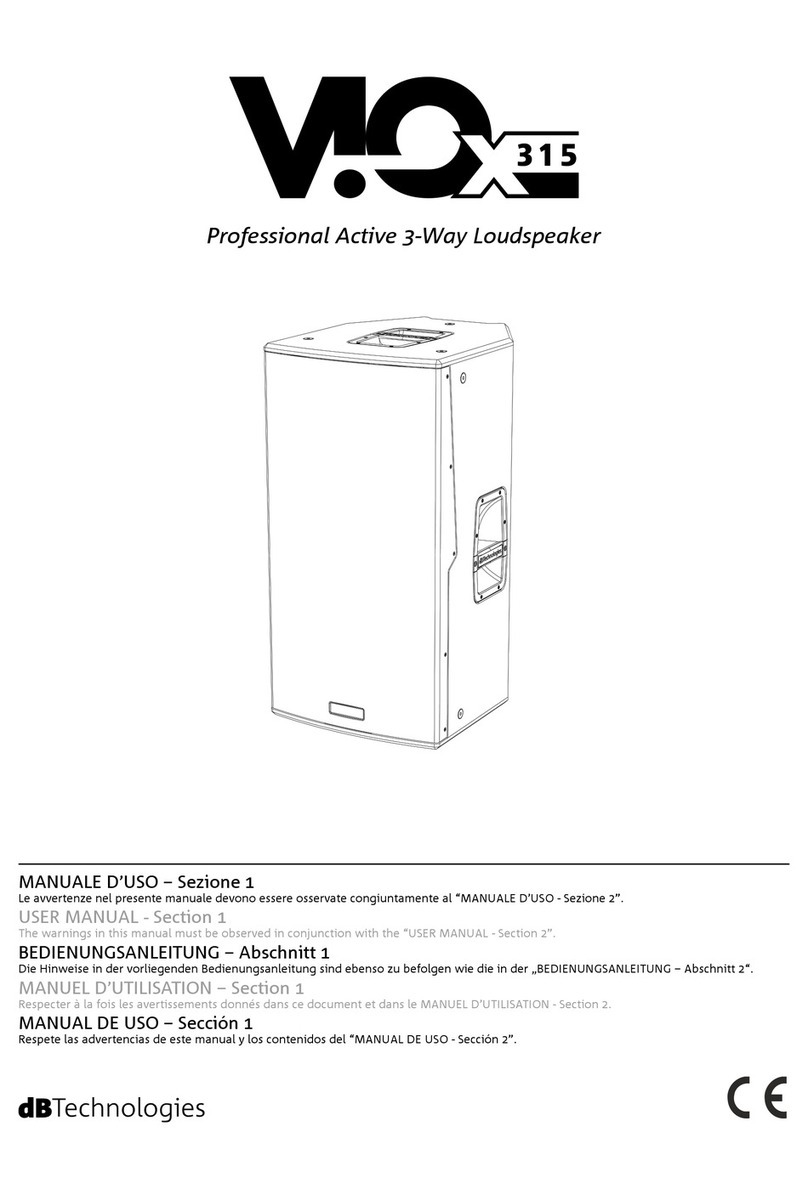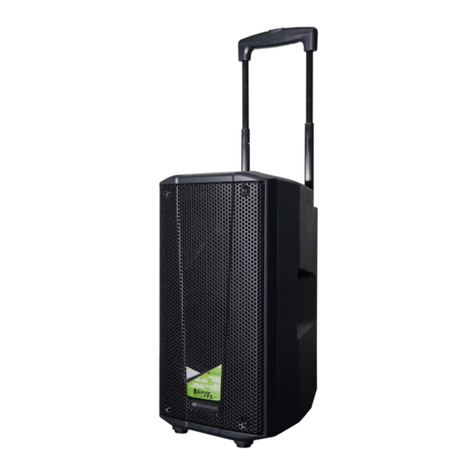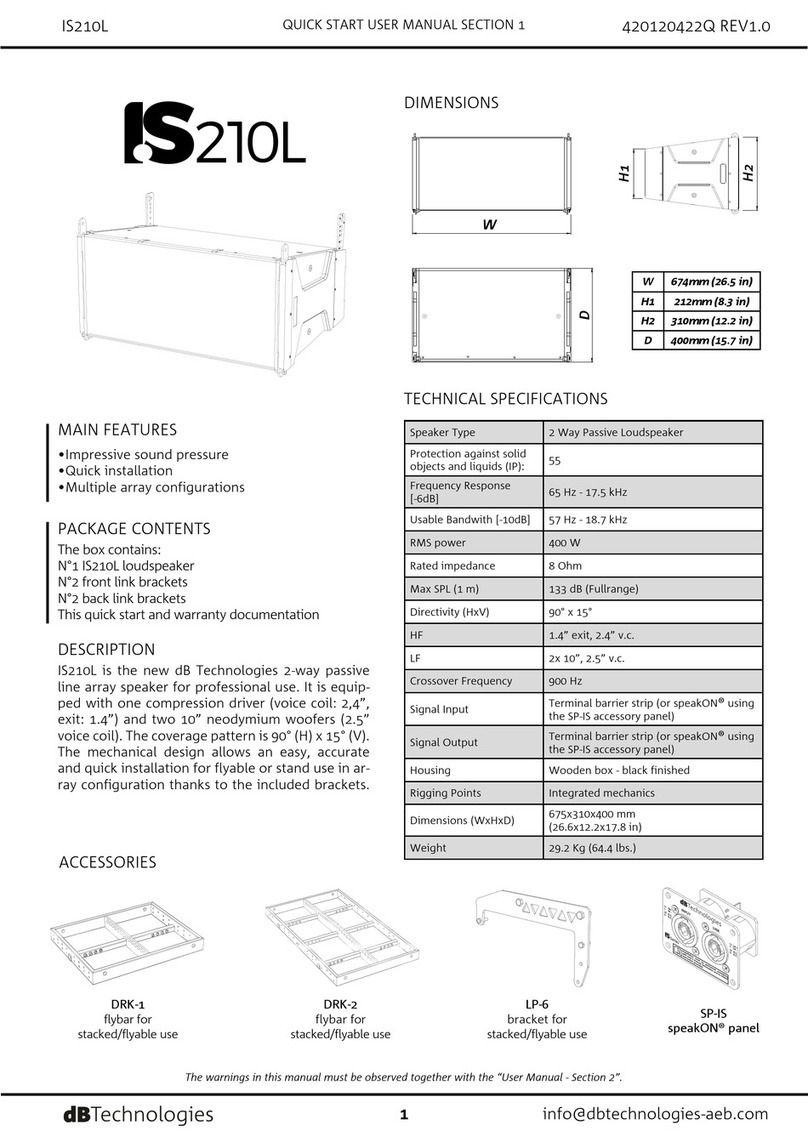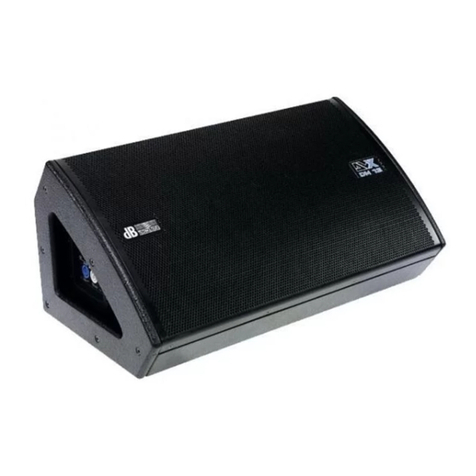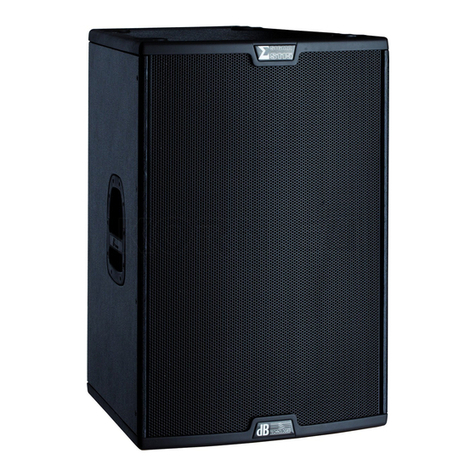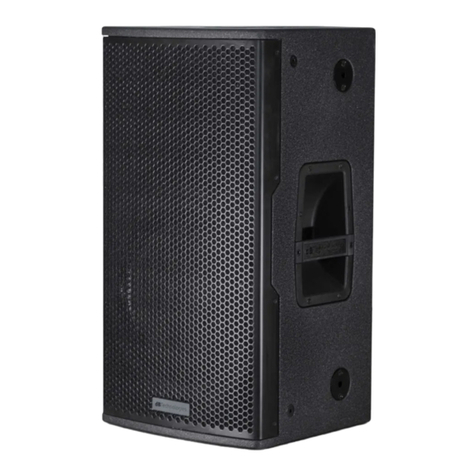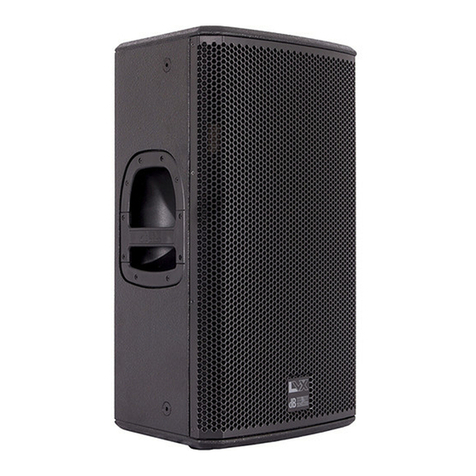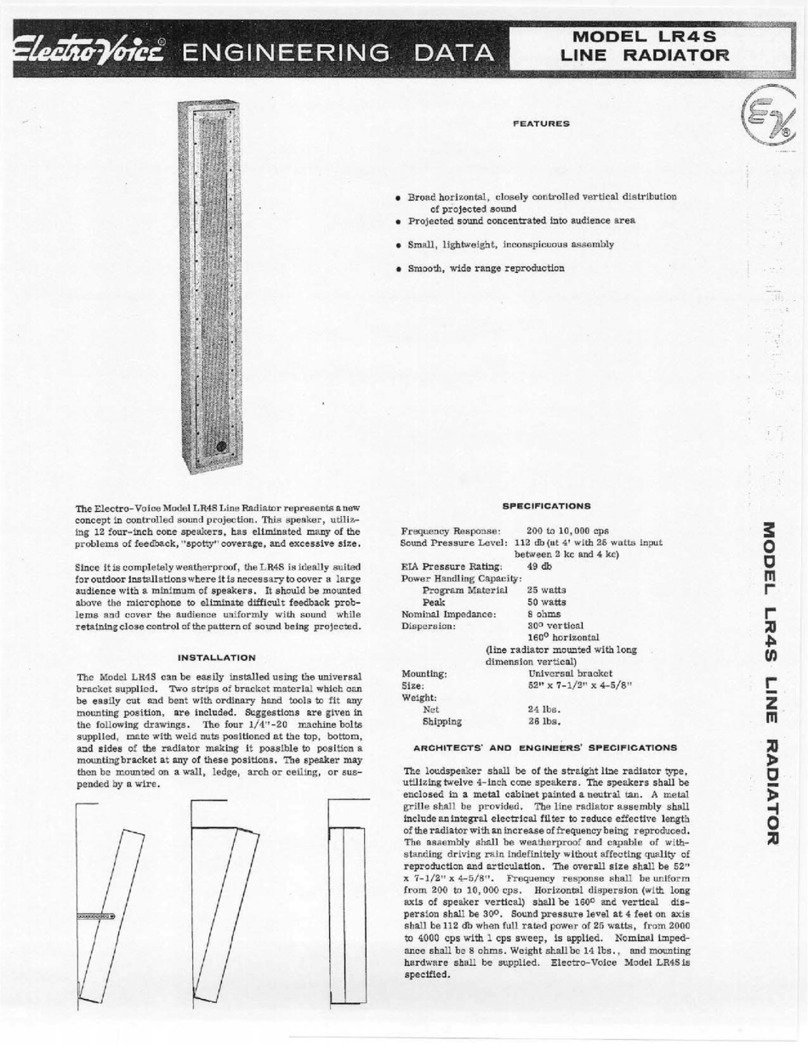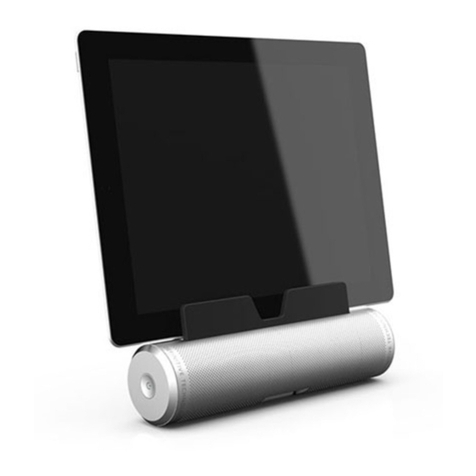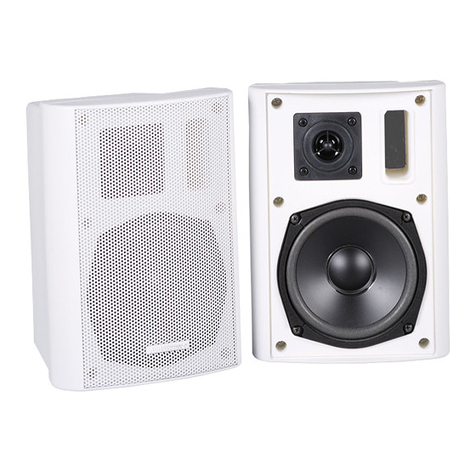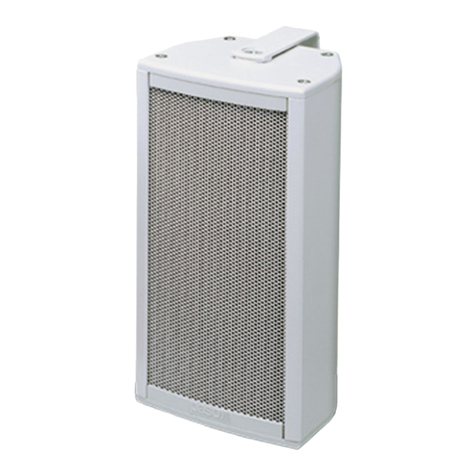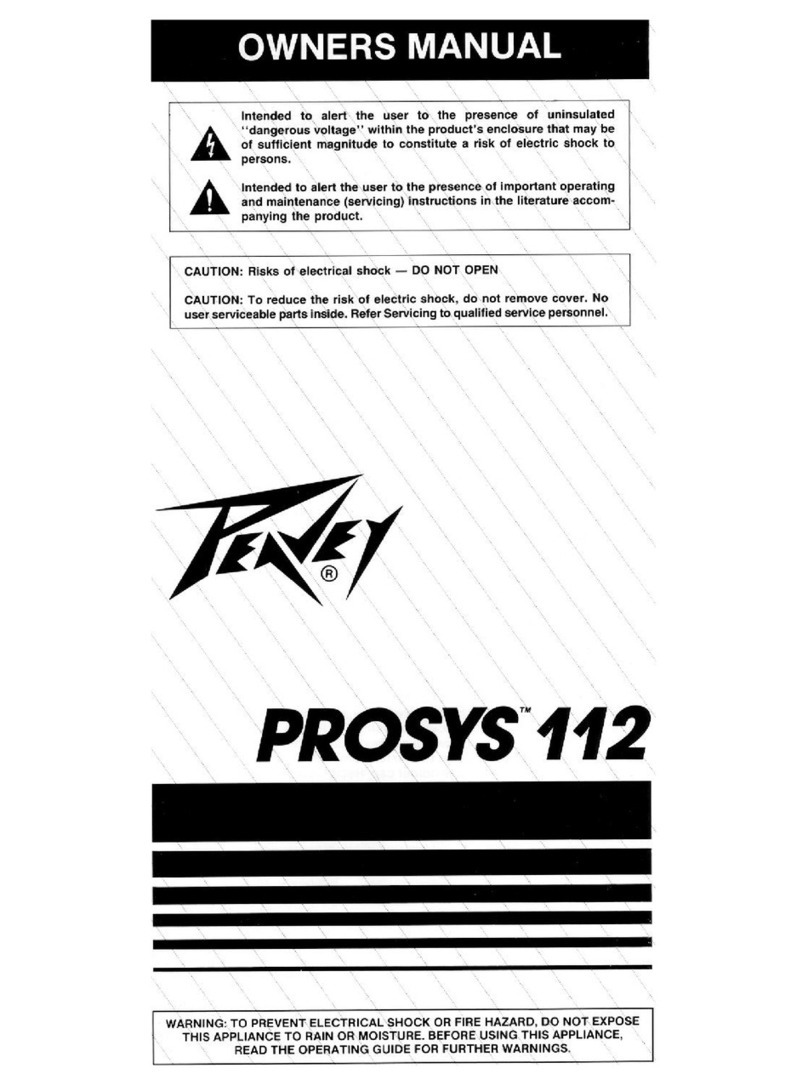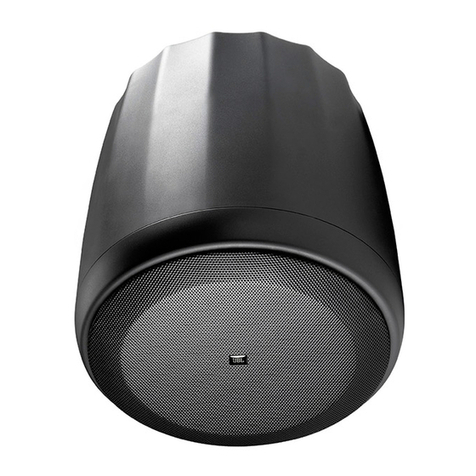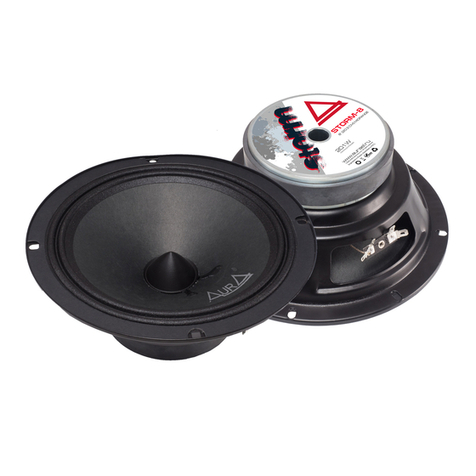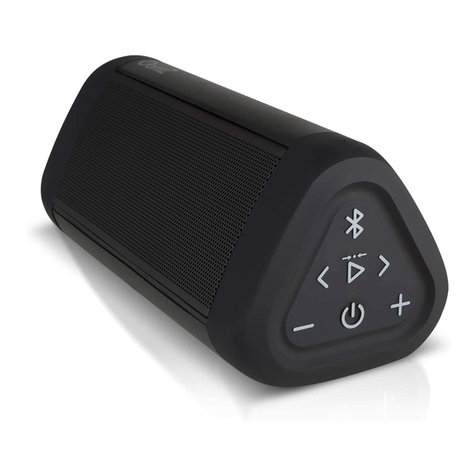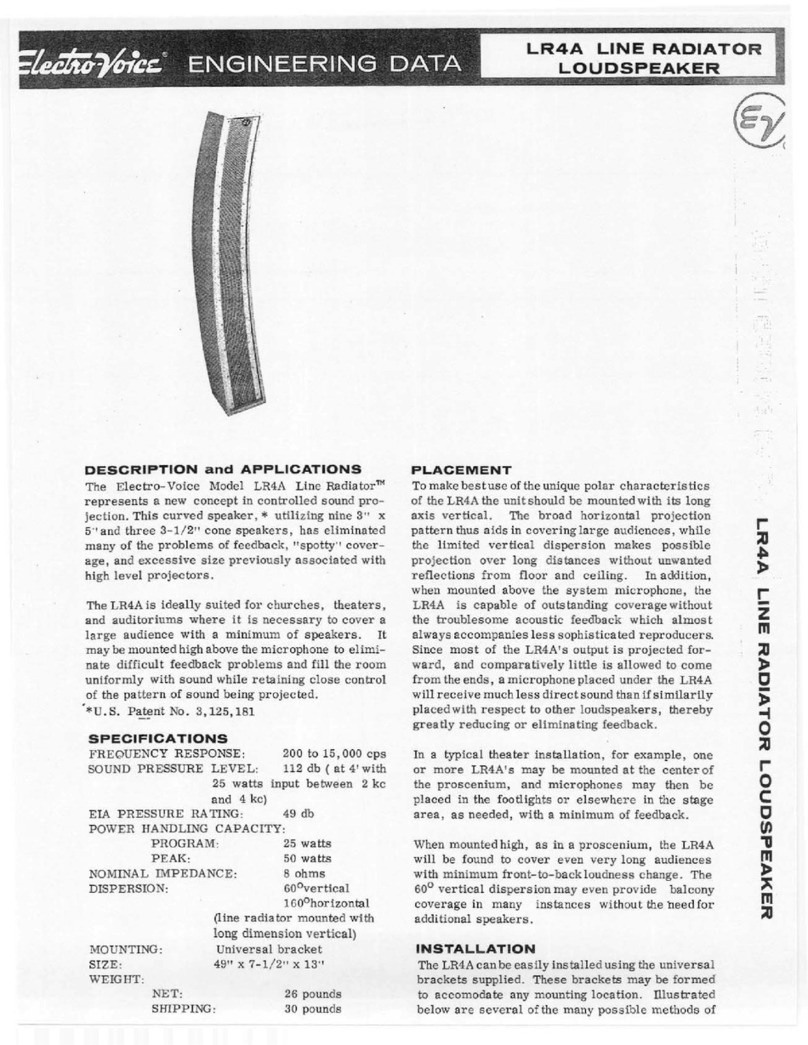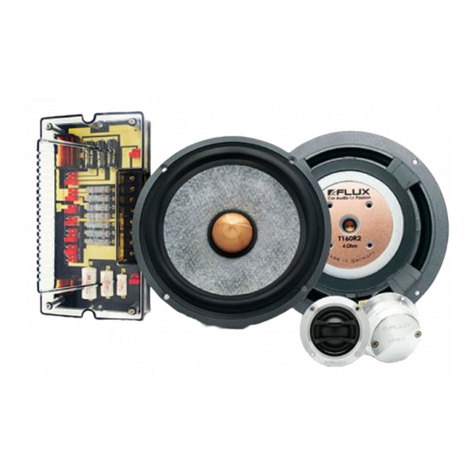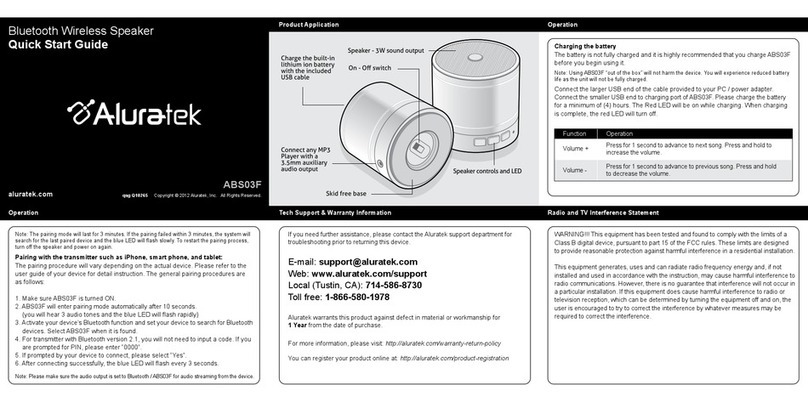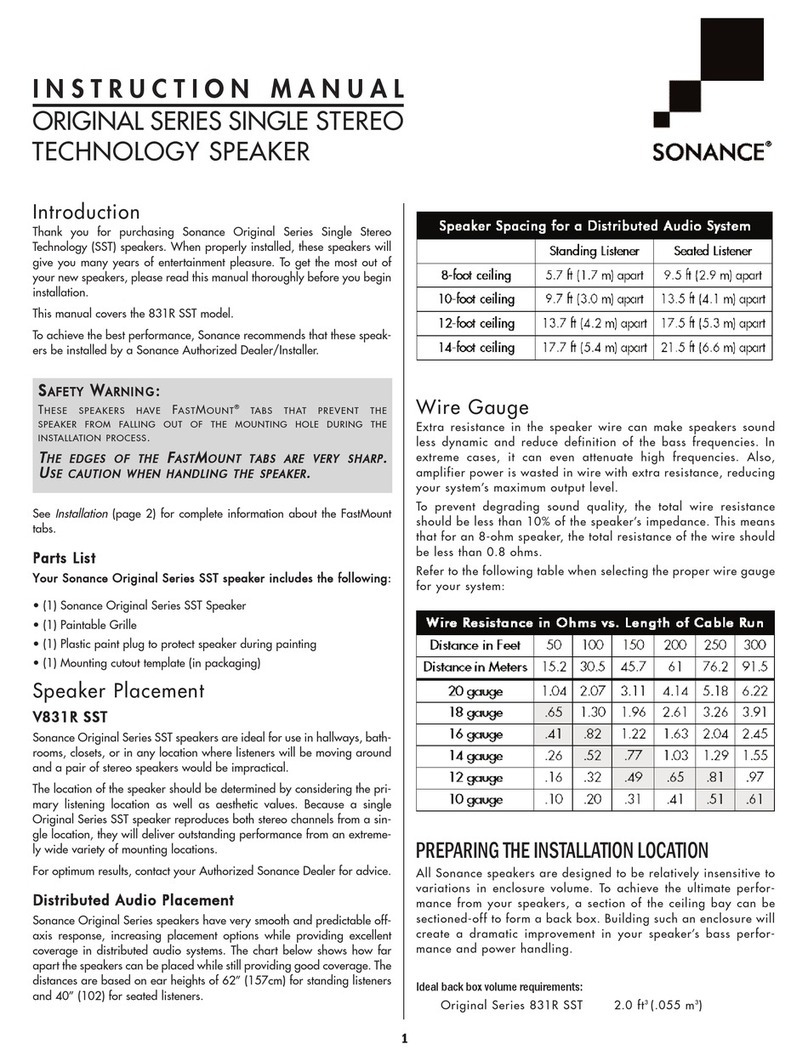www.dbtechnologies.com info@dbtechnologies-aeb.com
VIO L208 6 cod. 420120268Q ev.1.1
A seventh “Bass boost” position assign particular
emphasis on the lower frequencies. The “service/user”
one allows USB port communication for firmware
updating (or can recall on the speaker user settings
previously saved in remote control with
dBTechnologies Network). The “HIGH FREQUENCY
C MPENSATI N” can act on medium-high
frequencies. The user can choose among a “FLAT”
position (which give a flat equalization in this
frequencies band), and other 7 positions, depending
on the distance between the line-array and the
audience (in meters and feet).
c) Connect the power link output (9) of the first
module to the mains input (8) of a second VI L208
module of the line-array, and so on, in order to link
the power supply between all the elements. The
maximum linkable rated power and current depends
on the first module connection (type of cable, type of
connector used). The plate data give information
about the entire linked line-array system. The
maximum number of modules for each power daisy
chain connection [mains input + mains link] is: 1+5
VI L208s** at 220-240V~, and 1+3 VI L208s** at
100-120V~ (for further information see Technical
Data).
d) In case of remote control, connect the proper
Data Input (3) of the first module of the line-array to
the hardware remote controller (RDNet Control 2 or
RDNet Control 8) with cables equipped with etherC N
connectors. Then connect the Data utput (3) of the
first module to the Data Input (3) of the second one,
and so on. When the RDNet network is on and it has
recognized the connected device, the LED “Link” (6) is
on. The other LED (6) “Active” start blinking when
there is the presence of data transmission, the
“Remote Preset Active” advise that all the local
controls set on the amplifier panel (level, DSP presets,
etc.) are by-passed and controlled remotely by RDNet.
See also RDNet Control 2 and RDNet Control 8 user
manuals for further information.
e) Connect the power supply (8) to the first
module. The related “Ready” LED (5) turns on,
signaling the proper power connection. The “Signal”
LED (5) start blinking at the presence of audio signal
(greater than -20dBu). Avoid audio distortion
conditions, potentially signaled by the “Limiter” LED
(5).
IN FLOWN CONFIGURATION, IT IS ADVISABLE
TO START ALL THE CONNECTIONS FROM THE
TOP (“FIRST ELEMENT”) OF THE LINE ARRAY,
FOR THE BEST CABLING, IN ACCORDANCE WITH THE
FOLLOWING SCREENS OF “DBTECHNOLOGIES
NETWORK” SOFTWARE.
5) Software (Aurora, dBTechnologies Network and
dBTechnologies Composer)
VI L208 can be fully remote controlled via RDNet.
The connection details have been illustrated in the
chapter 4 (“d” point). In remote control mode, the
use of free professional software, developed by
dBTechnologies, allows a complete system
management: Aurora Net, dBTechnologies Network.
dBTechnologies Composer is a predictive software
for the design and the check of acoustical and
mechanical settings. They can be downloaded for
free from the official site:
www.dbtechnologies.com/EN/Downloads.aspx
Check always for software updates!
a) Aurora Net
The software which must be used in case of remote
control is Aurora Net. This cross-platform product
allows the user controlling, setting and organizing all
the Vi family. It also fully supports DANTE audio
networking. Check the site www.dbtechnologies.com
for further information.
b) dBTechnologies Network
A second
software which
must be used in
case of remote
control is
dBTechnologies
Network (from
the version no.
3.4). This
software can
control different
speakers in
different
configurations.
It allows a
complete remote
control and a full
real-time
monitoring in
various scenarios. For example, the user can control a
setup with 2 line-arrays of VI L208 and 3 VI S118
subwoofers, and change different parameters while
the entire system is sounding.
It can also offer a deeper loudspeaker control than the
simple rear amplifier panel rotaries.
